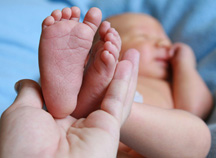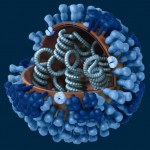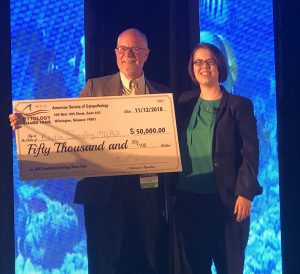 A two-tier testing method for Congenital Adrenal Hyperplasia (CAH) developed at the Wisconsin State Laboratory of Hygiene (WSLH) Newborn Screening Laboratory is reducing anxiety for families by increasing the specificity of test results.
A two-tier testing method for Congenital Adrenal Hyperplasia (CAH) developed at the Wisconsin State Laboratory of Hygiene (WSLH) Newborn Screening Laboratory is reducing anxiety for families by increasing the specificity of test results.
CAH is a potentially life-threatening endocrine disorder with the majority of cases caused by a defect in the enzyme 21-hydroxylase. This defect creates an overproduction of the hormone androstenedione, leading to ambiguous genitalia in females. It also causes decreased production of the hormones aldosterone and cortisol, which can cause an electrolyte imbalance leading to a “salt wasting crisis” and resulting in shock and death within the first week of a baby’s life if left untreated.
The WSLH began newborn screening testing for CAH in 1993 using an immune assay test that measures the concentration of an analyte through use of an antibody and fluorescent tag. However, the antibody may also bind to other analytes causing cross-reactivity, resulting in false positive results (i.e., the test results say the baby has the disorder when they really don’t). The chance for false positive results increases even more for babies that are stressed, such as those in a neonatal intensive care unit, because their cortisol and other steroid levels are already elevated.
In 2016, 428 babies in Wisconsin had abnormal CAH screening results based on this 1st tier immune assay test according to Dr. Patrice Held, WSLH Newborn Screening Co-Director and UW assistant professor of pediatrics. Of those 428 babies, only five were confirmed to have the disorder.
“These are typical statistics for not only Wisconsin, but for all states that perform just the 1st tier screening test for CAH using an immune assay,” Held said.
In 2017, WSLH Newborn Screening Advanced Chemist Eric Bialk began developing a 2nd tier test that would be run if the 1st tier test result is abnormal. This 2nd tier test measures five different steroids instead of just one and is performed using more sensitive technology – LC/MS-MS.
When the additional test went live in March 2018, Wisconsin became one of just a few states to implement a 2nd tier test for CAH.
“We wanted to implement a 2nd tier test to increase the specificity of the screening in order to decrease the number of false positives,” Held explained. “The 2nd tier test is performed on the same sample we receive for the initial newborn screen so we don’t need to contact the baby’s physician to collect another specimen, prematurely raising anxiety before knowing whether there is an increased likelihood for disease.”
According to Held, in the first six months since the 2nd tier test was implemented, 245 babies had abnormal results from the 1st tier CAH screen. After the 2nd tier test was performed, that number dropped to 16. Ultimately, three babies were confirmed to have the disorder. The 2nd tier test reduced the false positive rate by 93%.
“Implementing the 2nd tier test means our lab staff only had to contact 16 babies’ doctors about abnormal test results rather than 245,” Held said. “That’s a decrease in our staff time, a decrease in the time primary care physicians need to spend following up on the abnormal results, and, most importantly a decrease in stress for families who didn’t need to worry.”
In October, Held and Bialk won the Best Poster Award at the International Society for Neonatal Screening Conference for their description of the validation process of the 2nd tier test.
 The 2018-2019 Wisconsin State Laboratory of Hygiene Annual Report is now online at https://indd.adobe.com/view/0f146d2e-4a2d-437b-9173-8e4117ba7bda. There is a PDF version at https://www.slh.wisc.edu/news/publications/.
The 2018-2019 Wisconsin State Laboratory of Hygiene Annual Report is now online at https://indd.adobe.com/view/0f146d2e-4a2d-437b-9173-8e4117ba7bda. There is a PDF version at https://www.slh.wisc.edu/news/publications/. A two-tier testing method for Congenital Adrenal Hyperplasia (CAH) developed at the Wisconsin State Laboratory of Hygiene (WSLH)
A two-tier testing method for Congenital Adrenal Hyperplasia (CAH) developed at the Wisconsin State Laboratory of Hygiene (WSLH)  2018 marks the 100th anniversary of the devastating 1918 influenza pandemic that killed tens of millions worldwide. To commemorate the centennial, UW’s
2018 marks the 100th anniversary of the devastating 1918 influenza pandemic that killed tens of millions worldwide. To commemorate the centennial, UW’s 